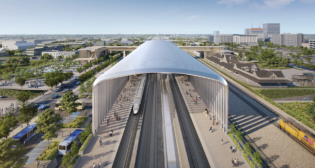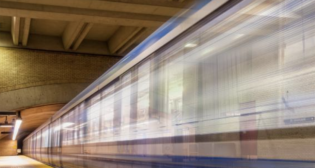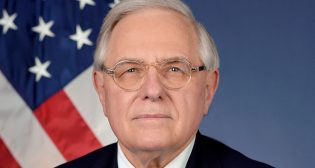
Texas Eagle highlights passenger train success
Written by Lyndon HenryListening to naysayers, and watching the efforts in Congress to defund Amtrak, you'd never realize that, as a regional and intercity mass transportation system, Amtrak is actually a top performer — setting new ridership records in eight of the past nine years.
This status was underscored by statistics presented during a Sep. 29th meeting of the Texas Eagle Marketing and Performance Organization (TEMPO), a grassroots group supporting Amtrak’sTexas Eagle train route. (I’m writing this aboard the southbound Eagle, Train 21, as it carries me back home from that same TEMPO meeting in Marshall, Tex.)
 The Eagle (shown at left) runs daily each way between Chicago and San Antonio. Three days a week, part of the train is coupled onto the Sunset Limited at San Antonio and continues on to Los Angeles. The Eagle then reverses the process from LA back to San Antonio and back up to Chicago.
The Eagle (shown at left) runs daily each way between Chicago and San Antonio. Three days a week, part of the train is coupled onto the Sunset Limited at San Antonio and continues on to Los Angeles. The Eagle then reverses the process from LA back to San Antonio and back up to Chicago.
Amtrak has never been properly funded, and for several years now it’s been in a kind of holding pattern, just trying to survive. Nevertheless, according to statistics presented by Todd Stennis, Amtrak’s South regional director of government affairs, Amtrak not only has been experiencing soaring ridership, but has been achieving impressive gains in other ways as well.
One advance that has probably helped attract more ridership is a 133% improvement in on-time performance since 2006. That’s quite an accomplishment, considering that 70% of Amtrak’s operation runs over private host railroads — exposing the service to delays from heavy freight traffic, poor track maintenance, and other problems.
But another major achievement, little realized by most people, is that Amtrak — which functions as both a regional connector, like a transit service, as well as an intercity mode — has the highest rate of cost recovery of any large publicly operated mass transportation service in the nation. Some 79% of its operating costs are covered by fares, and 85% when other revenue is included. That’s at least double the average rate for the U.S. transit industry as a whole.
What’s also not generally realized is that the national network (long-distance) routes are the primary hard workers that bring public transport to many smaller towns and cities. Thus, they help tie regions together, and chalk up most of the passenger-miles and lower operating costs per passenger-mile.
Among these routes, Texas Eagle is a star performer. According to Griff Hubbard, Amtrak’s Longview, Tex.-based product line agent and revenue manager, from Fiscal Year 2011 to FY 2012, ridership jumped 13.6% (to more than 314,000 annually) and revenue rose by 7.6% (to about $24.4 million).
The Eagle does have challenges. One of the worst is a schedule that prevents reliable connections with the other major westbound trains (Empire Builder, California Zephyr, Southwest Chief). Unfortunately, the “high speed rail” improvements to its route between St. Louis and Chicago (which will benefit corridor trains) won’t have an impact on the Eagle’s speed or schedule — or the lack of connections.
But the Eagle does have an enthusiastic constituency, pre-eminently represented by TEMPO, and a highly competent performance and marketing team in its corner. Those of us involved with this route are betting that even more spectacular achievements will be coming down the track.



